In the complex theater of natural survival, non-venomous spiders represent some of nature’s most ingenious tacticians. Despite lacking the fearsome venom of their more notorious cousins, these eight-legged architects have evolved a remarkable arsenal of defensive strategies that keep them alive in a world of hungry predators. From sophisticated camouflage to startling behavioral displays, non-venomous spiders demonstrate that survival doesn’t always require a venomous bite. Their defensive repertoire showcases evolution’s creativity, offering solutions that blend deception, evasion, and structural ingenuity. This fascinating intersection of behavior and adaptation reveals how vulnerability can drive the development of extraordinary survival mechanisms.
Masters of Disguise: Camouflage as Protection

Many non-venomous spiders have evolved remarkable camouflage abilities that render them nearly invisible to predators. The bird-dropping spider (Celaenia excavata) has perfected the art of resembling fresh bird droppings, complete with white coloration and an oddly shaped abdomen that completes the disgusting but effective disguise. Crab spiders can change their color to match the flower they’re sitting on, a process that takes several days but results in near-perfect concealment from birds and other visual hunters. Some species in the Cyclosa genus go a step further by decorating their webs with debris, dead insects, and even their own molted exoskeletons, creating a cluttered environment where their own bodies become just another piece of unremarkable detritus. These masters of disguise demonstrate that sometimes the best defense isn’t to fight back but simply to avoid being detected in the first place.
Architectural Marvels: Web-Based Defense Systems
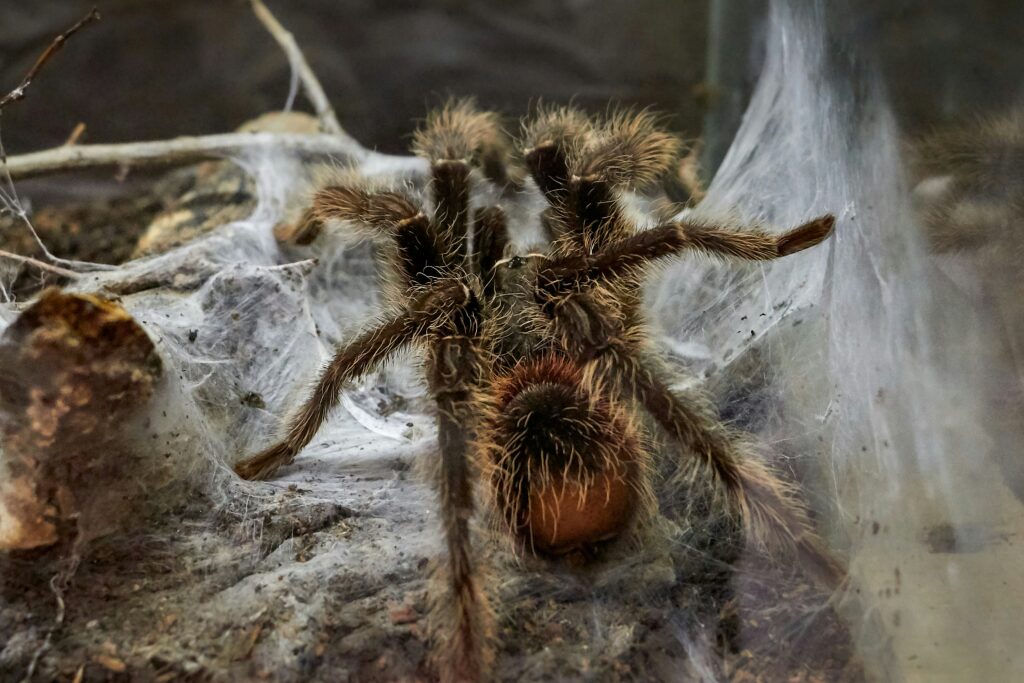
Spider webs serve as more than just hunting tools—they’re sophisticated defensive structures that protect their creators. Many orb-weaving spiders construct barrier webs, extra layers of silk placed strategically around their main web that act as early warning systems against approaching threats. The golden silk orb-weaver builds extraordinarily tough webs with tensile strength comparable to steel, creating physical barriers that many predators struggle to penetrate. Some species like the triangle spider create specialized retreat webs with trip lines that alert them to danger, allowing them to quickly escape into hiding places. Perhaps most impressive are the trap-door spiders, which construct underground burrows with hinged doors made of soil, vegetation, and silk that can be quickly pulled shut when danger threatens, creating an almost impenetrable fortress against predators that would otherwise easily overpower them.
The Art of Disappearing: Dropping and Fleeing Techniques
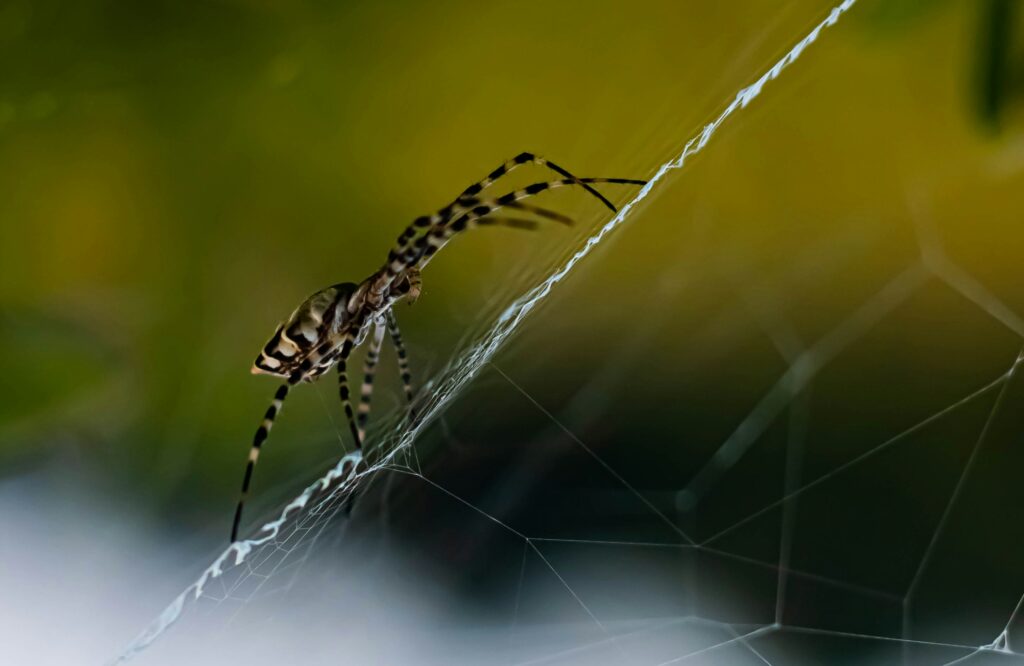
When faced with imminent danger, many non-venomous spiders employ rapid escape techniques that leave predators grasping at empty air. Numerous species practice “dropping behavior,” where they instantly release their hold and fall from their web or perch when threatened, sometimes deploying a safety line of silk that allows them to climb back once the danger has passed. The jumping spider family utilizes their exceptional vision and powerful legs to leap away from threats with remarkable precision, covering distances many times their body length in a split second. Some species have perfected running sideways or even backward, movements that confuse predators expecting forward motion. The highly adaptable house spiders can accelerate from standstill to top speed almost instantly, reaching velocities that make them nearly impossible for larger, slower predators to capture once they’ve detected a threat.
Strength in Numbers: Colonial Living as Protection
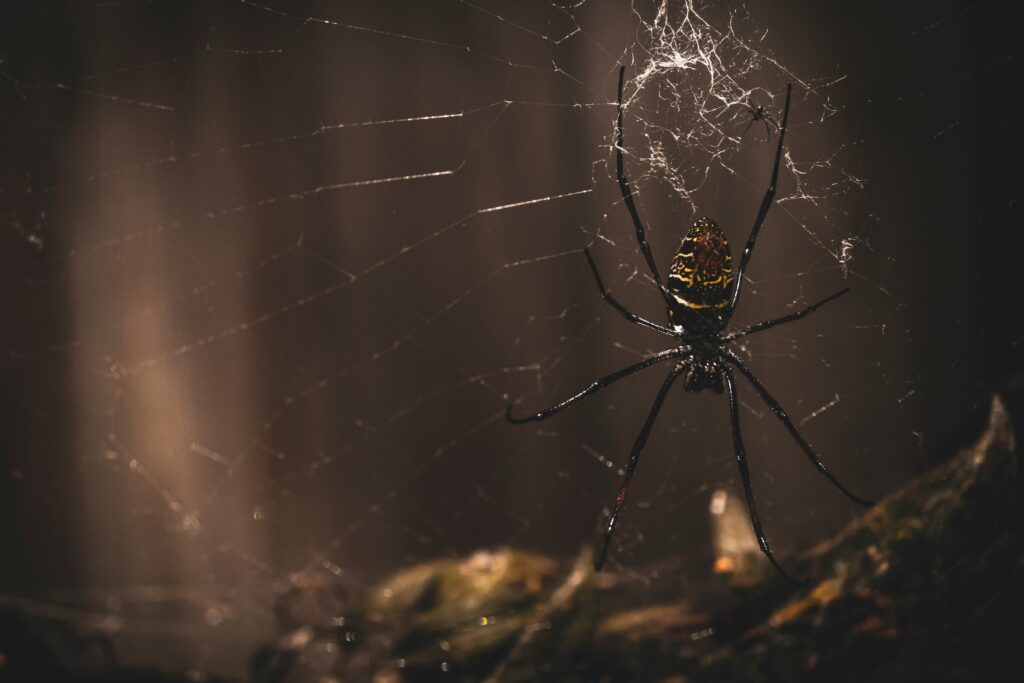
While most spiders lead solitary lives, certain non-venomous species have developed social structures that provide safety through collective defense. Anelosimus eximius, one of the most social spider species, forms colonies of thousands of individuals that collectively build massive webs spanning many meters, creating environments too complex and heavily populated for most predators to navigate successfully. These social spiders demonstrate coordinated defensive behaviors, with some individuals serving as sentinels that alert the colony to danger while others rapidly respond to threats. The collective web structure itself serves as a multi-layered defense system where intruders become entangled long before reaching the spiders themselves. Perhaps most impressively, these colonies can mobilize en masse to drive away predators too large for any single spider to confront, showcasing how cooperation can create formidable defense systems even among relatively vulnerable creatures.
Mimicry: Impersonating Dangerous Species

Some of the most fascinating defensive adaptations in non-venomous spiders involve mimicking more dangerous creatures that predators instinctively avoid. The jumping spider Myrmarachne resembles ants not just in appearance but in movement patterns, waving their front legs like antennae and adopting the distinctive stop-start walking pattern of ants to convince potential predators they possess the painful sting or toxic compounds many ant species are known for. Several spider species have evolved to look remarkably like wasps or bees, complete with striped patterns, narrowed waists, and even behaviors that simulate flight patterns of their venomous models. The Eresus spider sports bright red coloration with black spots reminiscent of ladybugs, which many predators avoid due to their bitter taste. These remarkable imposters benefit from what biologists call Batesian mimicry, gaining protection by resembling dangerous species without actually possessing the defensive capabilities they imitate—a sophisticated form of evolutionary bluffing.
Silk Deployment: Beyond Web Building
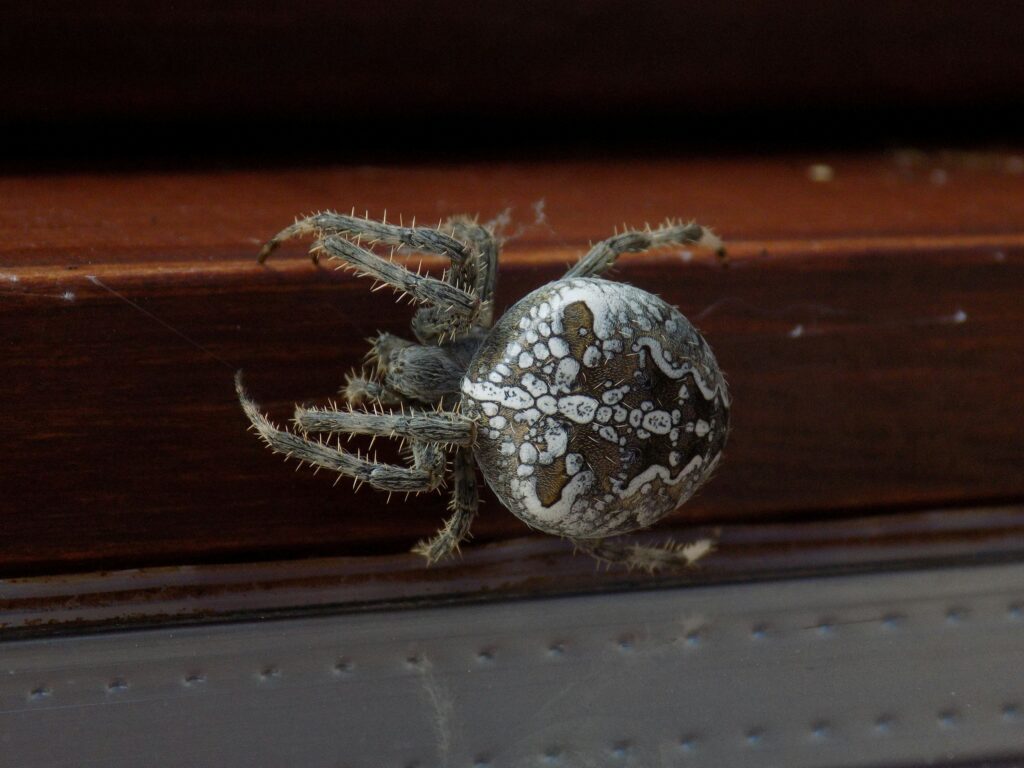
Beyond their familiar webs, non-venomous spiders utilize silk in numerous innovative defensive applications that help compensate for their lack of venom. When threatened, some species can rapidly produce masses of silk that they throw over predators, temporarily entangling them and buying crucial escape time. The bolas spider creates a specialized sticky ball of silk infused with moth pheromones that it swings at prey, but this same tool can be deployed defensively against smaller threats. Many ground-dwelling species lay silk trip lines around their retreats that vibrate when predators approach, providing early warning systems that trigger escape behaviors. Perhaps most impressively, certain spiders can produce extraordinarily fine silk threads that, when released into the air, catch rising thermal currents and carry the spider aloft—a behavior called “ballooning” that allows them to escape ground-based predators by literally floating away on the wind, sometimes traveling remarkable distances to safety.
Autotomy: Strategic Self-Amputation

In extreme danger situations, many non-venomous spiders resort to the dramatic defense mechanism known as autotomy—the ability to self-amputate a limb to escape capture. When a predator grabs a spider’s leg, special muscle contractions can detach the limb at a predetermined breaking point, allowing the spider to flee while leaving the predator with nothing but a twitching appendage. Unlike the permanent loss that would cripple many creatures, spiders can regenerate these sacrificed limbs during subsequent molts, though the replacement limbs may initially be smaller than the originals. This remarkable ability represents an evolutionary calculation that the temporary disadvantage of losing a limb is preferable to losing life entirely. Some species have even developed specialized fracture planes in their leg joints that facilitate clean breaks with minimal tissue damage and blood loss, demonstrating how thoroughly this seemingly desperate measure has been refined through natural selection.
Chemical Deterrents: Non-Venomous but Not Defenseless
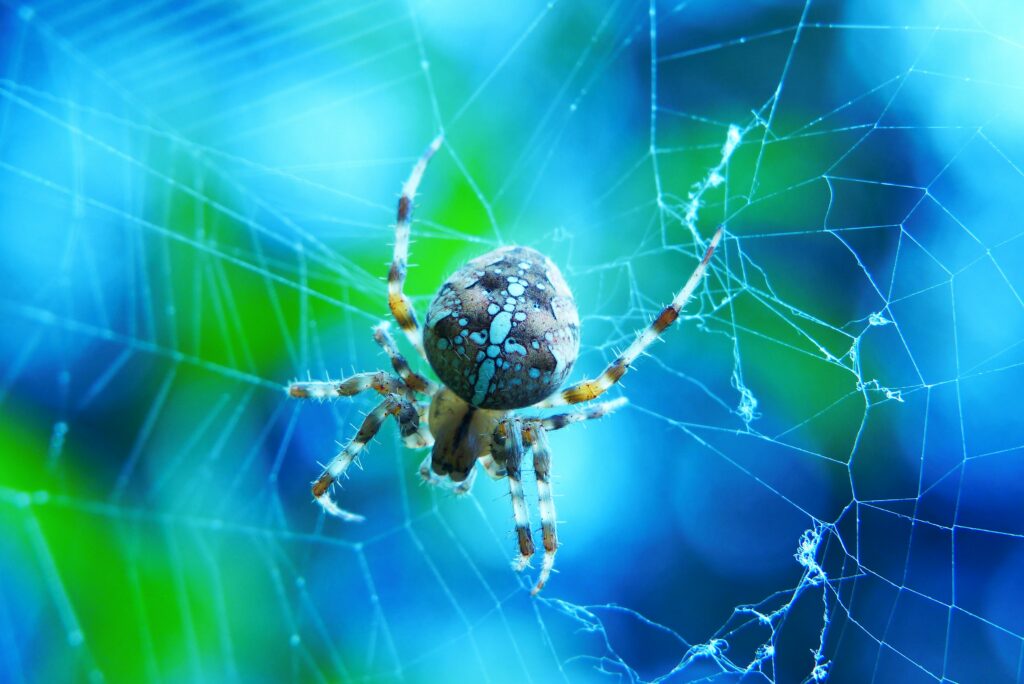
While lacking venom potent enough to harm predators, many non-venomous spiders produce chemical deterrents that make them unpalatable or otherwise unappealing. Certain orb weavers secrete bitter compounds that coat their bodies, making them distasteful to birds and other predators that might otherwise see them as an easy meal. Some species can release alarm pheromones when threatened that warn other spiders of danger while potentially confusing the sensory systems of attacking predators. The defensive chemicals produced by species like Nephila clavipes create strong odors that repel certain insectivorous predators, particularly those that rely heavily on scent for hunting. Perhaps most surprisingly, research has revealed that some “non-venomous” spiders actually do possess venom glands but with venom composed primarily of compounds that deter predators rather than subdue prey, blurring the line between defensive chemicals and true venom in fascinating ways.
Visual Deterrents: Looking Scarier Than They Are
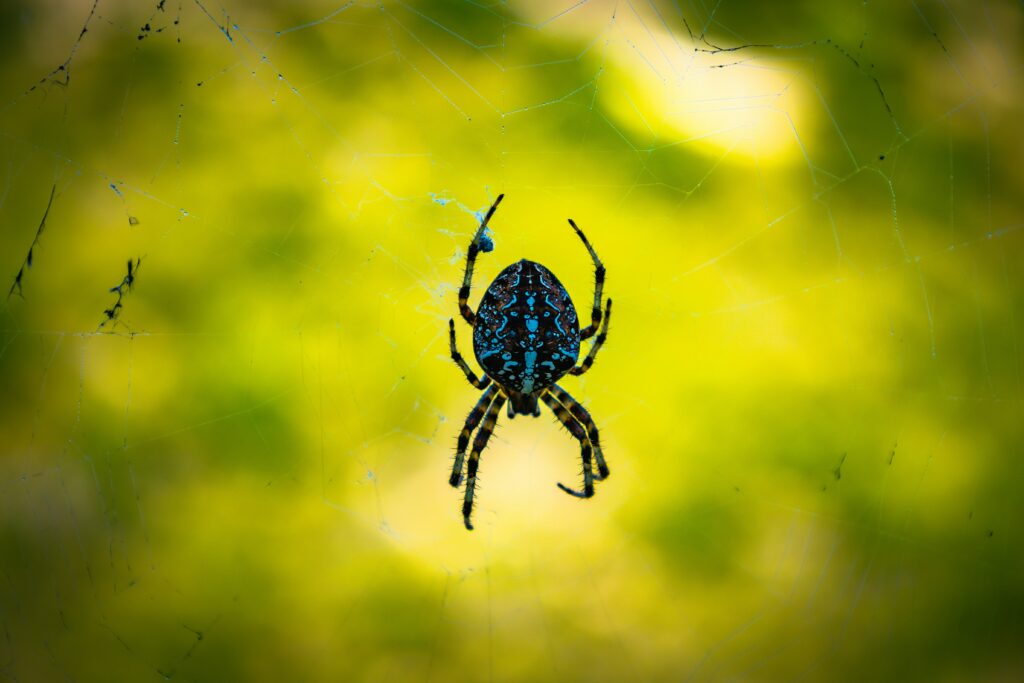
Many non-venomous spiders have evolved striking visual displays that make them appear more threatening than they actually are. The peacock spider, while tiny and harmless, performs elaborate threat displays when confronted by predators, raising its colorful abdomen and extending its legs to appear significantly larger and more formidable. Several species in the Argiope genus have evolved bright warning coloration patterns that predators instinctively associate with danger, despite these spiders being relatively harmless to most vertebrate predators. Some orb weavers create distinctive zigzag patterns in their webs called “stabilimenta” that not only strengthen the web but may serve to make the entire structure more visible, preventing larger animals from accidentally damaging the web and the spider. The common house spider can raise its front legs and spread its fangs when threatened, mimicking the threat posture of more dangerous species despite lacking the venom to back up this intimidating display—a bluff that often succeeds in deterring potential predators.
Behavioral Adaptations: Playing Dead and Beyond
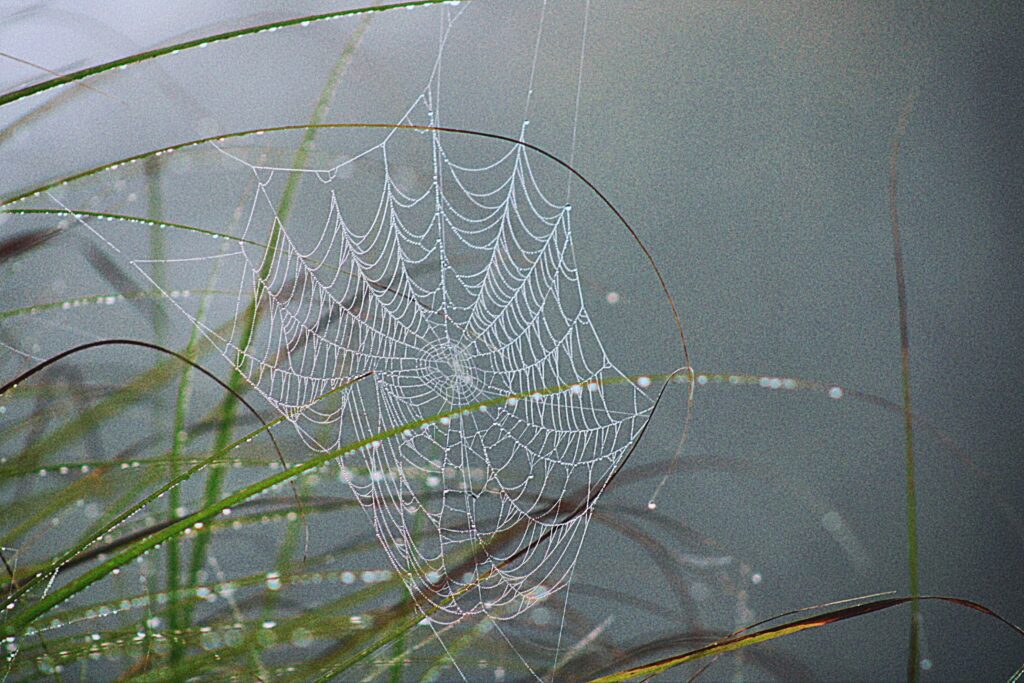
The behavioral repertoire of non-venomous spiders includes sophisticated acts of deception that confuse and deter predators. Thanatosis, or death-feigning, is practiced by numerous spider species that respond to threats by pulling in their legs, dropping to the ground, and remaining perfectly still, exploiting the fact that many predators lose interest in prey that appears to be already dead. Some orb weavers have developed the remarkable behavior of creating full-sized decoys of themselves using silk and debris, placing these “spider dummies” prominently in the web while hiding nearby, effectively redirecting predator attacks to the decoy. Certain ground-dwelling species adopt freezing behaviors precisely timed to coincide with moments when predator attention shifts, making themselves effectively invisible through stillness. Perhaps most ingeniously, the bird-dropping spider not only resembles its namesake visually but complements this disguise with behavioral adaptations, remaining motionless during daylight hours in positions typical of actual bird droppings, creating a disguise so complete that it fools even the most visually acute predators.
Web Vibration Techniques: Confusion Tactics
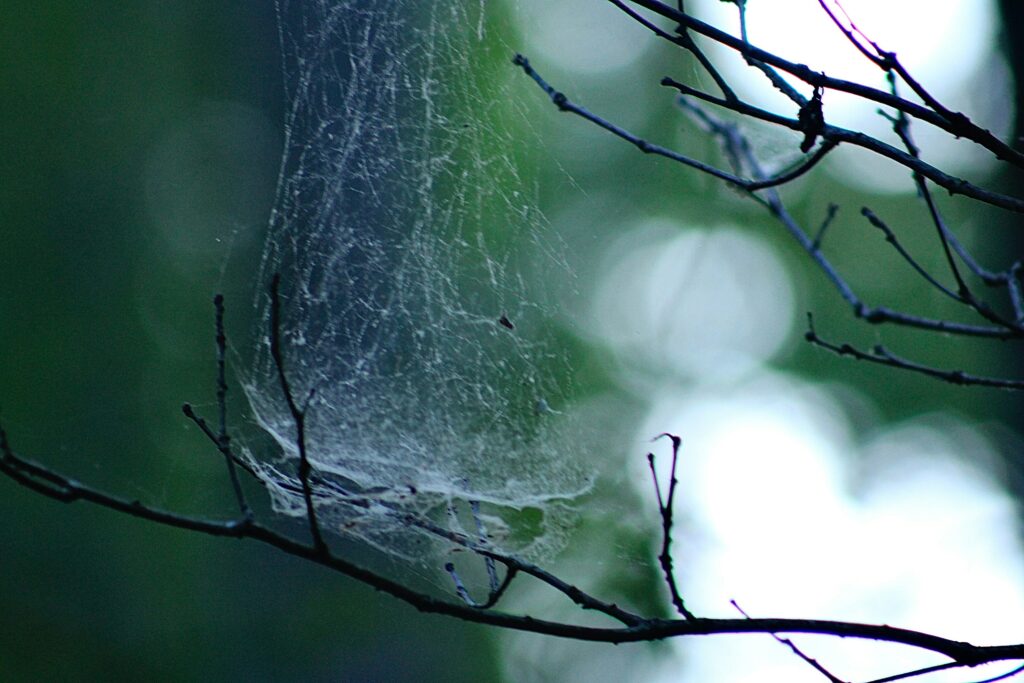
Many web-building non-venomous spiders have developed sophisticated techniques involving web manipulation that confuse or deter potential predators. When threatened, certain orb weavers perform rapid bouncing movements that cause their entire web to vibrate violently, making them difficult to target and creating a disorienting visual effect for predators attempting to strike. Species like Cyclosa morretes construct web decorations that they violently shake when disturbed, creating multiple moving targets that divide predator attention and increase the chance of mistaken strikes. Some web-builders can alter the tension of different silk strands in response to threats, effectively “playing” their web like a musical instrument to generate specific vibration patterns that either confuse predators or mimic the movements of larger, more dangerous creatures. The impressive Argiope spiders combine visual deterrents with mechanical ones, positioning themselves at the center of conspicuous X-shaped stabilimenta and violently shaking their webs at frequencies specifically calibrated to disrupt the visual processing systems of their main predators—a remarkable example of defensive behavior tuned to exploit the neurological limitations of would-be attackers.
Specialized Habitats: Environmental Protection
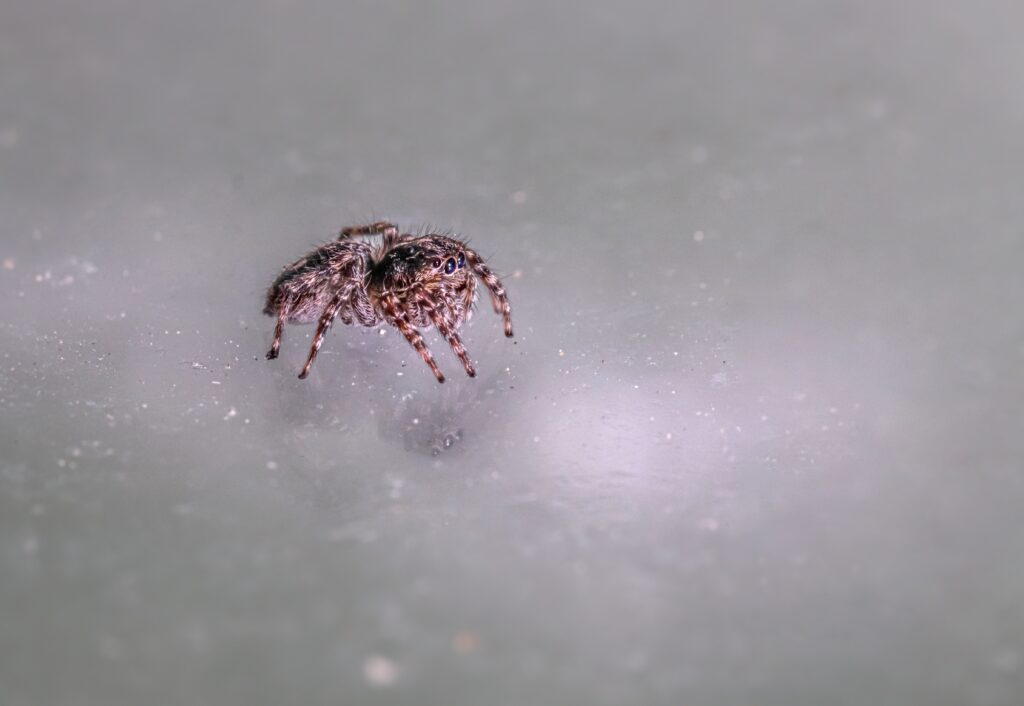
Many non-venomous spiders compensate for their vulnerability by selecting and modifying habitats that provide natural protection from predators. Trapdoor spiders excavate deep burrows in soil, lining them with silk and constructing camouflaged doors that blend perfectly with the surrounding terrain, creating secure retreats that even dedicated spider-hunters struggle to detect. Several species have adapted to live exclusively under loose tree bark, exploiting this thin, protected space where larger predators cannot follow. The diving bell spider (Argyroneta aquatica) constructs underwater silk chambers filled with air where it can remain safely submerged for extended periods, effectively using an aquatic environment to escape terrestrial and avian predators entirely. Perhaps most impressively, certain spiders have developed mutualistic relationships with specific plants, particularly those with natural defenses like thorns or sticky surfaces, building their retreats among these protective structures and gaining protection from the plant’s own defensive adaptations—a sophisticated form of biological outsourcing that transforms potentially vulnerable spiders into well-defended residents of natural fortresses.
The world of non-venomous spiders reveals nature’s ingenuity at its finest. These remarkable arachnids demonstrate that survival doesn’t always demand fearsome weapons—sometimes cleverness, adaptability, and evolutionary creativity provide even better protection. From microscopic details of silk chemistry to grand architectural structures spanning meters, from split-second escape behaviors to lifelong habitat specialization, non-venomous spiders showcase defensive strategies that have been refined over millions of years of evolutionary pressure. Their success reminds us that in nature’s great game of survival, having multiple defensive options often proves more valuable than relying on a single powerful weapon. As we continue to study these fascinating creatures, we discover not just how they avoid becoming prey, but profound lessons about adaptation, specialization, and the countless solutions that evolution can produce when faced with the fundamental challenge of staying alive in a dangerous world.

